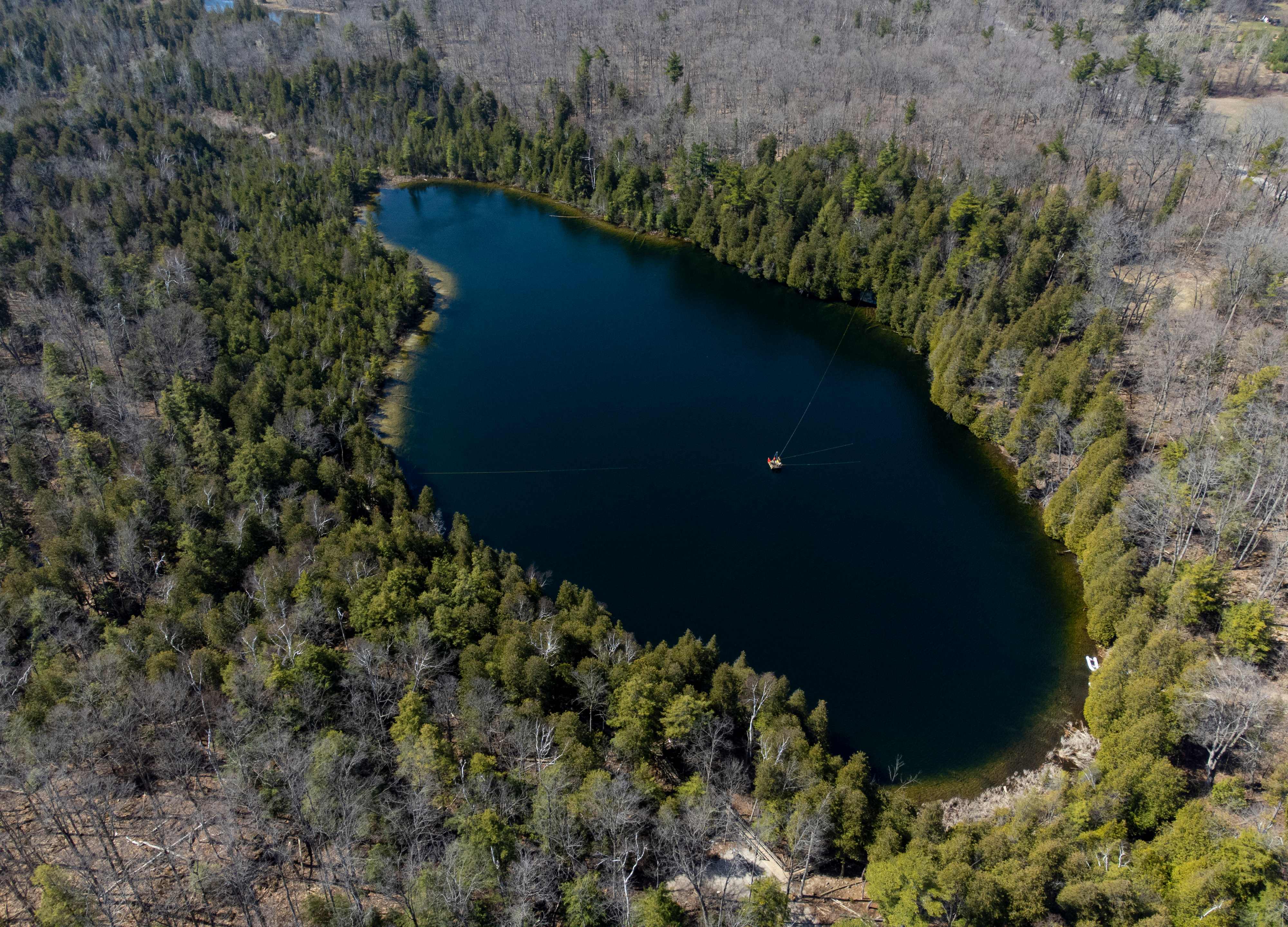The search for the Golden Spike: Scientists make ‘significant’ discovery in understanding human history
For the past 20 years, scientists have argued that Earth has left behind the Holocene – a relatively stable period in the planet’s 4.5 billion-year history that lasted for 11,7000 years since the end of the last major Ice Age

Scientists say that they have pinpointed evidence of the dawn of the Anthropocene – a new geological epoch caused by humanity’s irreversible impact on Earth.
This so-called “Golden Spike” – a single location that marks the geological break – was removed from a tiny, relatively unknown lake in Canada, the Anthropocene Working Group (AWG) announced on Tuesday.
“This marks a significant step towards the scientific, and thereby also political and social recognition of the scale and severity of planetary transformation processes unleashed by industrialized humanity,” the team said.
For the past 20 years, scientists across disciplines have argued that Earth has left behind the Holocene – a relatively stable period in the planet’s 4.5 billion-year history that lasted for 11,7000 years since the end of the last major Ice Age.
Instead, they say, we are in the Anthropocene – essentially the Age of Humans – a distinct geological period.
The so-called “Great Acceleration” was caused by a range of activities: burning fossil fuels, which increased greenhouse gas levels; deforestation; a boom in plastics; chemical fertilisers; erasing of biodiversity; invasive species; and radioactivity from nuclear bomb testing.
The “Anthropocene” is not yet an official unit of the geologic scale and intense debate surrounds whether it should be defined as an epoch given humans’ short timeline in Earth’s long history.
The proposal must be approved by three separate groups of geologists before a final decision is made at a 2024 conference.
But the term is already widely used by scientists, policymakers, activists and the media, particularly in reference to the spiralling impacts of a human-caused climate crisis.
“The Holocene has ended. The Garden of Eden is no more. We have changed the world so much that scientists say we are in a new geological age: the Anthropocene, the age of humans,” the naturalist Sir David Attenborough told the World Economic Forum in 2019.
Reaching agreement on when the Anthropocene began – and where on Earth was the best evidence of it – has been the subject of intense scientific debate.
The AWG has worked for 10 years to answer these questions.
The start of the Anthropocene is 1950 to1954, they said, and named Crawford Lake, a small, deep body of water in a conservation area an hour from Toronto, as the special place.
The lake is more or less unique because it’s extremely deep (79 feet) but has a relatively small surface area (25,800 square feet). This means that the different layers of water don’t mix, and the lakebed has remained undisturbed as each layer of sediment drifted down through the water column over centuries.
“The bottom of the lake is completely isolated from the rest of the planet, except for what gently sinks to the bottom and accumulates in sediment,” said Professor Francine McCarthy, from the Department of Earth Sciences at Brock University in Canada, and a voting member of the Anthropocene Working group.
When scientists extracted a sample core from the lake bed it provided a timeline of the geological record with distinct, year-by-year layers.
The key marker of the Age of Humans, the working group said at a briefing, was plutonium isotopes from Hydrogen bomb testing which was carried out in the 1950s.
Jurgen Renn, who is not in the working group but directs the Max Planck Institute for the History of Science in Berlin, explained that while humanity’s actions have changed the course of the planet, little can be done to stop the trajectory in the short-term.
“It’s not that we steer the Earth system in such a way that if tomorrow, we stop using fossil energy and emitting greenhouse gases, we can change the course of the planet,” he said.
“There are so many changes that have been committed already - the glaciers melting, the entire cryosphere. These changes that we have induced will only unfold in the next decades and centuries. And there is no way that we can that we can stop this for the time being.”
Subscribe to Independent Premium to bookmark this article
Want to bookmark your favourite articles and stories to read or reference later? Start your Independent Premium subscription today.

Join our commenting forum
Join thought-provoking conversations, follow other Independent readers and see their replies